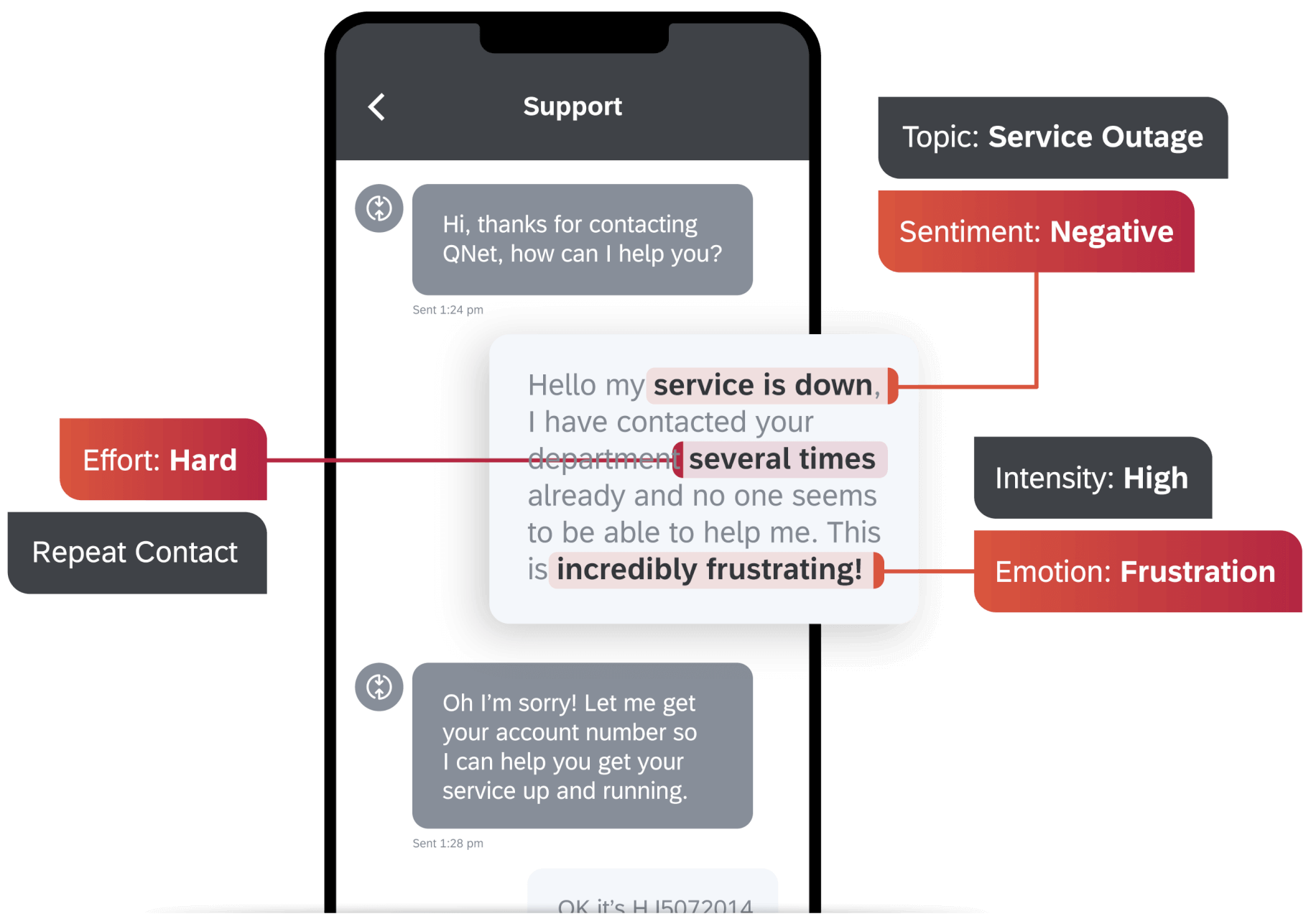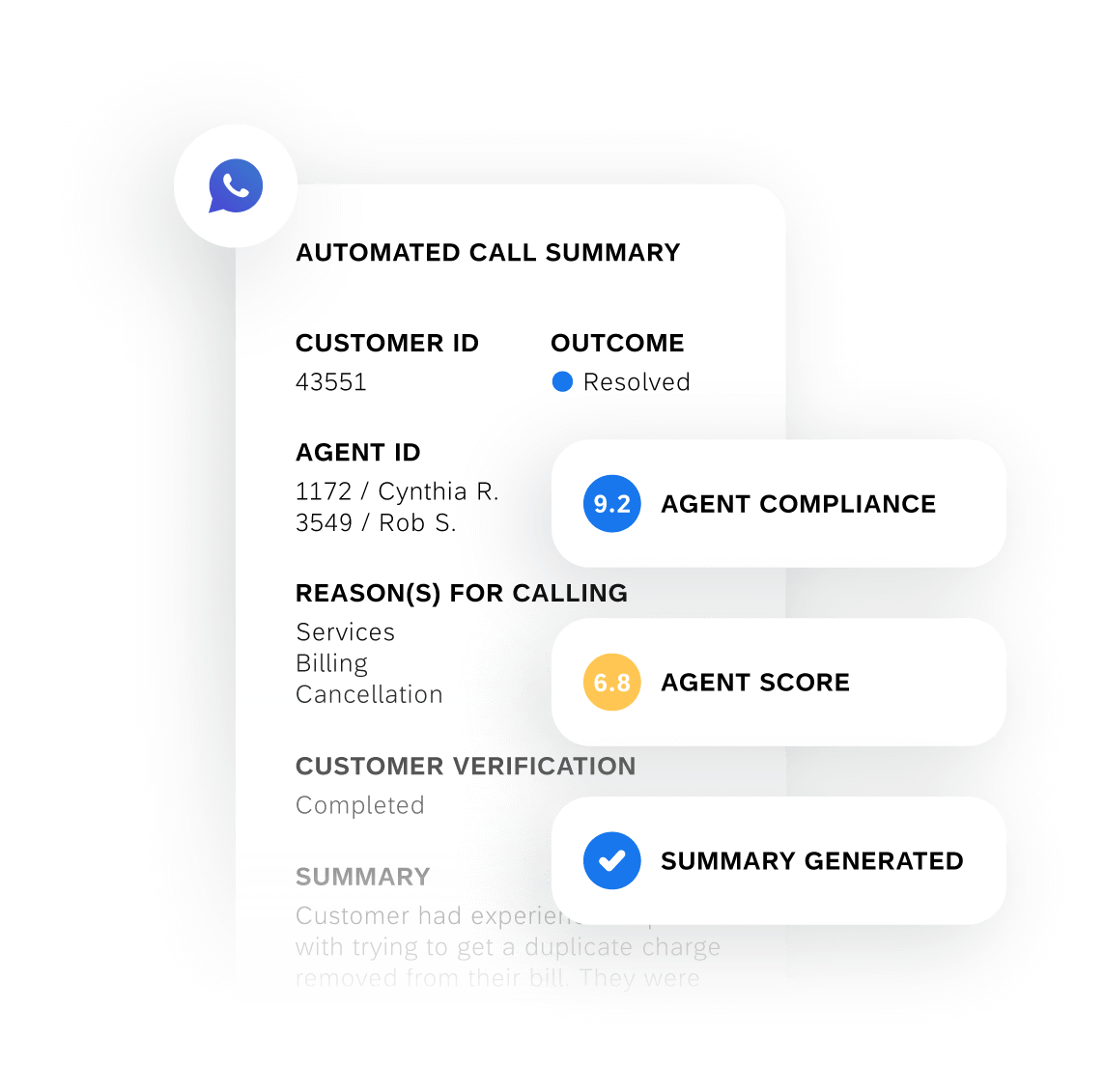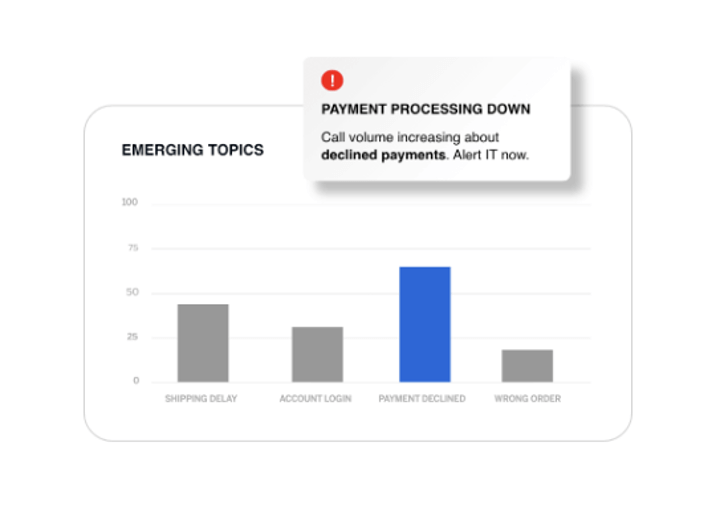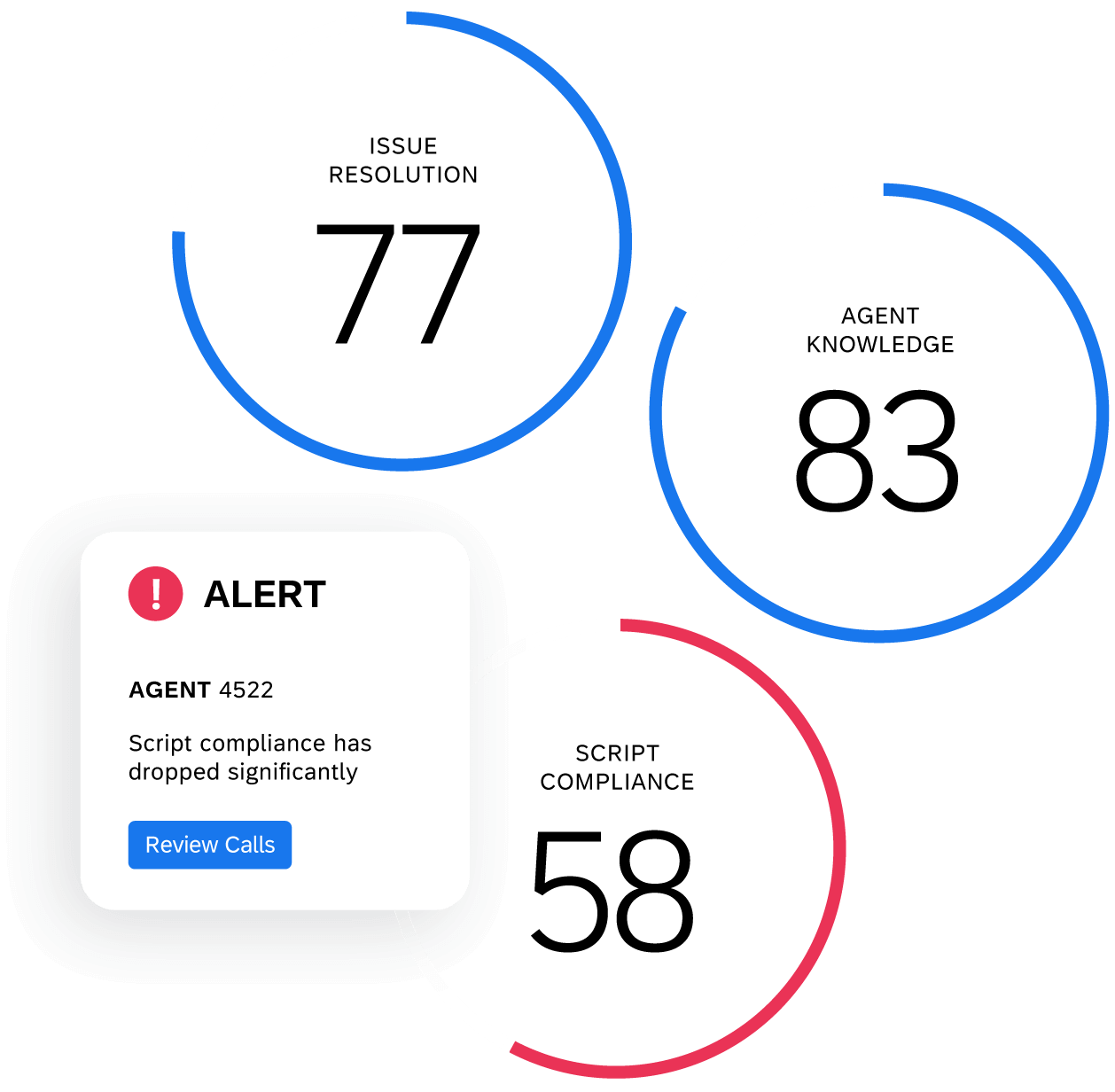What is call centre speech analytics?
Speech analytics is the term used to describe any technology that can listen to audio conversations and analyse the nature of the call alongside several other characteristics. In a call centre environment, those metrics and speech characteristics are recorded and presented in a way that contact centre managers and agents can use to improve customer service.
That might be from a conflict resolution point of view, or in terms of agent performance, scoring, and script compliance.
Speech analytics software usually uses AI and machine learning technology to determine the meaning of what’s being said. With the right tools, call centres can automatically register and react to traditionally abstract values like effort, intent, emotion, intensity, and sentiment – in both the customer’s tone and the words they use.
Discover the leading speech analytics software in the industry
What is real-time speech analytics?
Speech analytics solutions capable of processing conversations in real-time add a layer of value to the contact centre by surfacing tips and advice to agents right there on the call – rather than just as a wrap-up (post-call) or long-term data collection.
That’s incredibly powerful because when agents are provided with the right information at the right time, they’re able to be more empathetic, agile, and knowledgeable about a customer’s background. Real-time speech analytics empower agents to take actions that can make the difference between losing or keeping customers.

Speech analytics vs text analytics
Speech analytics deals with conversations that happen over the phone, whereas text analytics applies the same principles to text-based conversations. Text analytics can take customer interactions made via SMS, live chat, social media, or email and analyse the topic, the customer’s problem, and the emotion, which helps contact centre agents respond quickly, with relevance and empathy.
Speech analytics: Why is it important?
Call centres play a hugely important role in any business’ success. Handling customer queries and issues with speed and empathy is still one of the best ways to turn detractors into advocates and build long-lasting customer relationships. To be able to do that at an unprecedented scale is even better.
Speech analytics tools enable contact centre agents to do their very best work – removing guesswork and providing a deep insight into how the customer thinks, feels and how that affects their behaviour. You’re adding science to the art of human interaction and making use of datasets in pretty much real-time which would otherwise be way too vast for people to be able to get to grips with. Not only can this data help agents on the call at that moment, but it allows leaders to spot wider trends – perhaps theres a faulty product causing frustration for a lot of customers – when this data is aggregated and analysed.
Here are some of the core business benefits of adding speech analytics to your contact centre capabilities:
Boost customer satisfaction
When you’re able to get to the core of a customer’s issue, understand their emotion and where things are going wrong in real-time, and add that to a raft of other historical data, you become superhuman at delivering solutions rooted in empathy.
Speech analytics that can prompt agents to take specific actions, say certain things and de-escalate carefully, you’ll naturally drive up customer satisfaction, and drive down customer churn.
Reduce post-call work
Contact centre performance and efficiency can also benefit from speech analytics. Any customer experience management solution offering speech analytics should also be able to automate time-consuming post-call work, as well as be able to update customer interaction histories, aiding in personalisation and empathy should they need to speak to you again.

Discover and fix pain points
Call centres produce huge amounts of unstructured data, but without the right listening software that data may as well go straight into the trash. Software that’s able to aggregate topics and sentiment from thousands of calls can use that insight to paint a vivid picture of areas where customers are routinely running into issues or finding friction. Those insights just aren’t possible if calls are being monitored manually in small samples.
Automated agent scoring
Speech analytics goes both ways – it can monitor both the customer and the agent. In contact centres, real-time analytics can help with an agent’s script compliance, keeping them on track, as well as scoring the call immediately afterward. This can help identify top performers, point out potential coaching moments, and ensure a high level of quality assurance across every interaction.
How does contact centre speech analytics work?
Human speech is incredibly complicated. Sometimes we struggle to say what we really mean, stumble over words, repeat ourselves or cut sentences short. All of this means that any solution attempting to truly analyse and understand human speech needs to be powered by artificial intelligence that boasts natural language processing (NLP) technology.
What is NLP?
In simple terms, natural language processing is the ability to add context and derive meaning from human speech or written text, using statistical methods and machine learning algorithms.
While basic speech-to-text software can transcribe the things we say into the written word, things start and stop there without the addition of computational linguistics. NLP goes a step further by being able to parse tricky terminology and phrasing, and extract more abstract qualities – like sentiment – from the message.
Everything you need to know
Where AI comes into play for speech analytics is in being able to understand the difference between seemingly similar statements, and nuanced ways of speaking. Take the following two sentences, for example:
“The service was outstanding.”
“I have an outstanding balance.”
You’ll know, instinctively, that the first one is positive and the second one is a potential issue, even though they both contain the word ‘outstanding’ at their core.
Without NLP, though, a software program wouldn’t see the difference; it would miss the meaning in the message here, aggravating customers and potentially losing business in the process.
What can you do with speech analytics data?
Collecting data is only ever useful if you know what to do with it, and how to turn metrics into action. We’ve explored some of the broader business benefits of speech analytics, but here are some of the more pragmatic processes and customer retention superpowers that contact centres can employ with real-time speech analytics:

Streamline the customer experience
And not just in the contact centre. Speech analytics software collects really useful information at an enormous scale. And that scale can surface trends that would otherwise go unnoticed. Maybe, for instance, a lot of customers are calling to complain that it’s cheaper to cancel and rebook a flight than it is to change their travel date.
That’s information that’s hard to gather when agents are working independently – especially in multiple languages or locations – but moreover, software that flags a trending issue can prime agents for that kind of call, and suggest great solutions.
It’s that kind of real-time data around customer interactions that can empower contact centres to become an integral part of the service and product design process – with hard data to back up their assumptions.
Coach agents when they need it
Intelligent analytics tools, like Qualtrics XM Discover, can monitor agent performance in real-time. Metrics like empathy, issue resolution, and script compliance create a holistic view of how each agent is handling each call, today and over time.
Our solution tracks top-performing agents against granular call events, like greeting customers by name, thanking them for their business, or if the customer loses interest. Then, if any agents need a helping hand, our post-call speech analytics will offer up a prompt to schedule a coaching session.
Watch our latest video on text analytics
Be predictive, not reactive
Using speech analytics, XM Discover constantly looks for and raises red flags. If call centre volume increases, you’ll want to know why. Our tool can identify the underlying cause behind spikes in contact centre activity, with Predictive Issue Resolution helping to uncover bottlenecks in processes, highlight possible future return callers, and alert relevant parties to customer satisfaction risks.

Maybe a new ad campaign is causing a stir? Maybe frontline staff are going to need more support in the coming hours or days? With Qualtrics you can automatically monitor, identify, and escalates script adherence and regulatory mentions at scale.
Build better personalisation
When you really know what people are saying, you can build a much clearer picture of each customer. People expect brands to speak to them like individuals, rather than one of many, so it helps to have every past interaction, purchase, and preference aggregated in one place, alongside insights and suggestions.
That’s exactly what Qualtrics Experience iD offers – building on XM Discover to help contact centres take customer experience to the next level.
See call centre speech analytics in action
